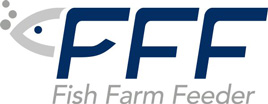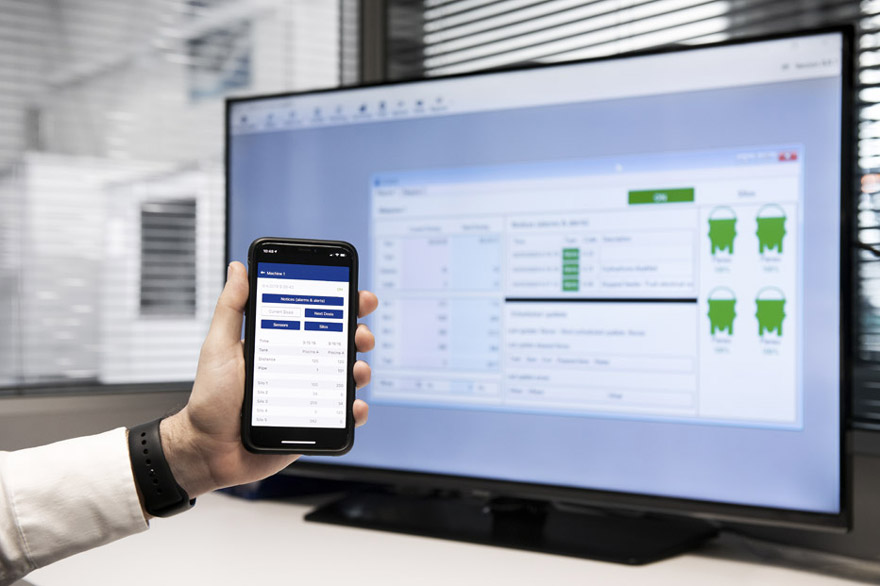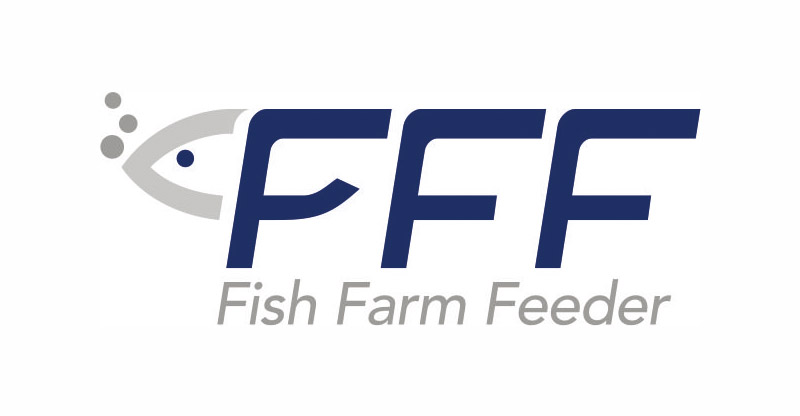The Feeding Programs used in aquaculture must be able to adapt to any kind of fish or shrimp species, as well as to each stage of their growth. Taking these requirements into account the feeding program should allow to personalize the following data for each tank or cage of a fish farm:
- Total number of daily doses to be sent – based on the number of times we want to feed the fish per day.
- Time of each of the doses to be sent – knowing that some fish can be fed up to 24 hours a day.
- Exact amount of each dose – with one type of feed or as in the case of Fish Farm Feeder feeders allowing to mix different types of pellets.
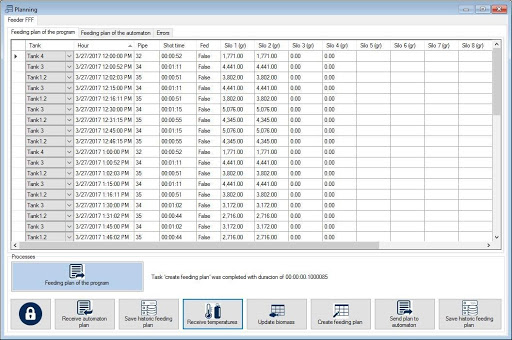
How to calculate a daily feed quantity per tank?
Any Feeding Program needs to have defined the quantity of feed that should be delivered to a tank. For getting this data we should multiply the biomass of the tank by the coefficient of its feeding table – the average size of the fish in the tank or cage and the water temperature.
Tables Used in a Feeding Program
With the aim to optimize the FCR each fish or shrimp farm has its own way how to improve the growth results. Apart of taking into account the quantity of feed (in %) based on fish size and the temperature of water, the aquaculture experts need to decide how many times to feed a day and the number of hours fish or shrimp should be fed.
For this reason an automated feeding program should contain the following tables:

- Feed table: It is used to calculate the amount of feed that should be delivered to each tank by applying a coefficient on the biomass depending on the water temperature and the average size of the fish.
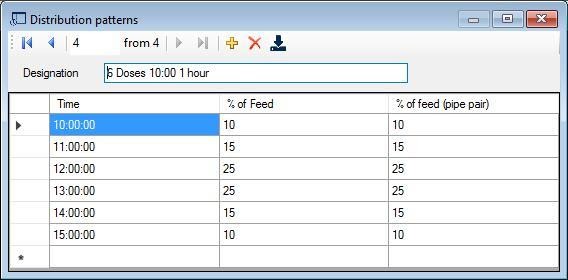
- Distribution table: This table specifies the daily feed by hours. It is the fish farm staff who indicates the number of feeding hours (HH: MM) and the percentage of feed to be given in each dose over the total daily feeding quantity.

- Conversion table: Once the feeding plan is finished, we should increase the biomass of each tank by applying a coefficient based on the average size of the fish and the water temperature over the total supplied feed.
Further ways how to optimize the feeding system
Each specie eats in a different way. So if we want to optimize fish/shrimp feeding an automated feeding system should give the possibility to feed at different speeds – when generating the dosage and as well as when sending it to each tank.
Therefore we must also take into account the following parameters to be used when sending the dose:
- Speed for generating each dose
- By increasing the speed of the dispenser we are able to generate more quantity of doses and reducing the time.
- By reducing the speed of the dispenser we can generate less amount of feed, extending the dosage time in the tank.
- Air velocity per tank. Depending on the feeding distance, we may regulate the blowing speed. This way for tanks located closer to the feeding system less speed would be needed. If the tanks are further away, higher speed should be applied. This form we have better control of accurate feed delivery to each tank.
NOTE: As important as generating and sending the dose to each tank it is crucial to use an adequate spreader for optimal distribution of the feed within a tank or cage.
Control, Monitoring and Reports
A feeding program used in aquaculture must be able to be monitored and updated in real time respecting the daily feeding needs. Only this way is it possible to guarantee a correct monitoring and control.
In the case of FFF, the monitoring of the fish farm can be done remotely by connecting to a PC or through an App – via a Tablet or a mobile phone. So the operators are informed about the state of feeding at any time.
In addition, the operation of a fish farm may require sending of several daily Feeding Programs. For this reason, there must be a record of all executed Food Programs, which ensures individualized monitoring of each sent dose. The reports generated by the program are also used for providing data for fish/shrimp traceability, controlling the process from the farm to the end consumer.
By incorporating a feeding program into a centralized feeder such as manufactured by The Fish Farm Feeder, it is possible to control and optimize fish feeding. The automated generation of dosing programmed within the feeding system – respecting the fish size – reduces the feed waste. Extended functionalities within the program, as explained in this article, improve feed management in a fish farm, that help to increase production efficiency and so its profitability.
